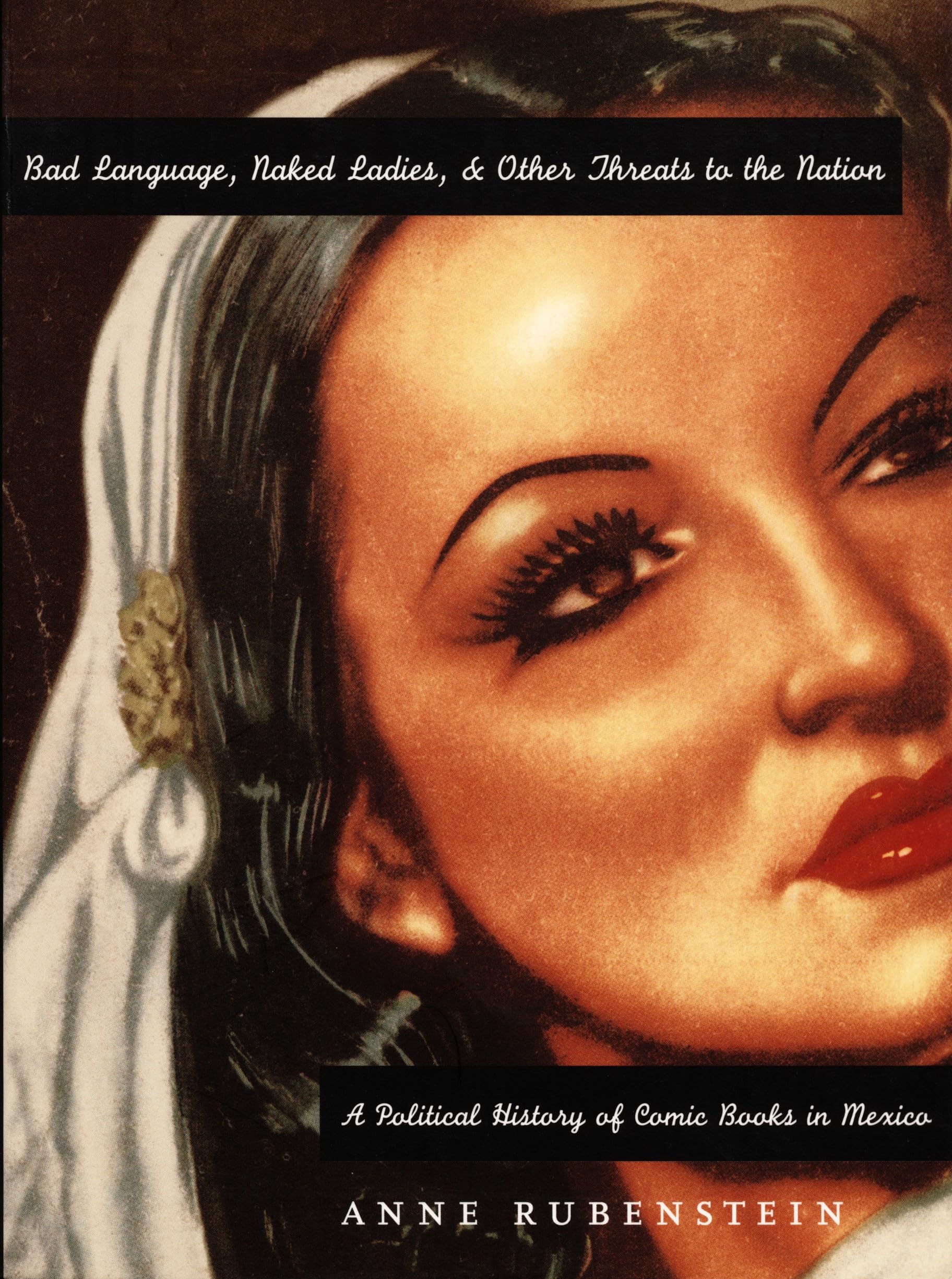In Bad Language, Naked Ladies, and Other Threats to the Nation , Anne Rubenstein examines how comic books—which were overwhelmingly popular but extremely controversial in post-revolutionary Mexico—played an important role in the development of a stable, legitimate state. Studying the relationship of the Mexican state to its civil society from the 1930s to the 1970s through comic books and their producers, readers, and censors, Rubenstein shows how these thrilling tales of adventure—and the debates over them—reveal much about Mexico’s cultural nationalism and government attempts to direct, if not control, social change. Since their first appearance in 1934, comic books enjoyed wide readership, often serving as a practical guide to life in booming new cities. Conservative protest against the so-called immorality of these publications, of mass media generally, and of Mexican modernity itself, however, led the Mexican government to establish a censorship office that, while having little impact on the content of comic books, succeeded in directing conservative ire away from government policies and toward the Mexican media. Bad Language, Naked Ladies, and Other Threats to the Nation examines the complex dynamics of the politics of censorship occasioned by Mexican comic books, including the conservative political campaigns against them, government and industrial responses to such campaigns, and the publishers’ championing of Mexican nationalism and their efforts to preserve their publishing empires through informal influence over government policies. Rubenstein’s analysis suggests a new Mexican history after the revolution, one in which negotiation over cultural questions replaced open conflict and mass-media narrative helped ensure political stability. This book will engage readers with an interest in Mexican history, Latin American studies, cultural studies, and popular culture. “This is a very interesting study which from an unusual angle reveals a lot about Mexican, as well as Latin American, culture and politics.”—Erick D. Langer, Georgetown University “With this study Anne Rubenstein breaks new ground in Mexican cultural history, giving comic books the political and social importance they deserve in the making of Mexican national society and PRI hegemony after 1940. Her gendered analysis is refreshing and exemplary.”—Mary Kay Vaughan, University of Illinois at Chicago "This is a very interesting study which from an unusual angle reveals a lot about Mexican, as well as Latin American, culture and politics."--Erick D. Langer, Georgetown University Anne Rubenstein is Assistant Professor of History at York University, Toronto. Bad Language, Naked Ladies, and Other Threats to the Nation A Political History of Comic Books in Mexico By Anne Rubenstein Duke University Press Copyright © 1998 Duke University Press All rights reserved. ISBN: 978-0-8223-2141-5 Contents Acknowledgments, Introduction, Chapter One: The Creation of Mexican Comic Books, 1934–1952, Chapter Two: Home-Loving and without Vices: "Modernity," "Tradition," and the Comic Book Audience, Chapter Three: The Uses of Tradition: Conservative Opposition to Comic Books, Chapter Four: The Uses of Failure: La Comisión Calificadora, 1944–1976, Chapter Five: Comic Books Respond to Their Critics, 1944–1976, Conclusion: The Lessons of Cultural Conservatism, Notes, Index, CHAPTER 1 The Creation of Mexican Comic Books, 1934–1952 Mexico's first comic book appeared in 1934. By 1940, comic books were part of most Mexicans' experience, as ubiquitous as radio and more common than cinema. A huge audience had been called into being practically overnight. How did comic books find, and keep, these readers? There are two possible approaches to this question. First, we can see that the Mexican publishing industry took advantage of demographic luck. In the mid-1930s, a vast number of newly literate working people began to visit newsstands; the conditions were right not just for comic books but also for such related forms as tabloids, women's magazines, and collections of song lyrics. Second, we can examine the contents of the comic books from this era. Comic book publishers used the freedom inherent in a brand-new form to experiment with narrative, imagery, and format until they hit on generic formulas–strategies for making up stories, characters, advertisements, and contests–that promised to build and maintain an audience. These strategies worked by persuading consumers that there was little or no distinction among the readers, creators, and characters of the comic books. Literacy as a Political Question The decades between 1930 and 1950 were, for the most part, a healthy time for Mexican industry in general and the newspaper business in particular. An expanding economy as well as a growing population created potential comic book buyers: the number of people with money to spend on cheap entertainment ballooned. For instance, a













